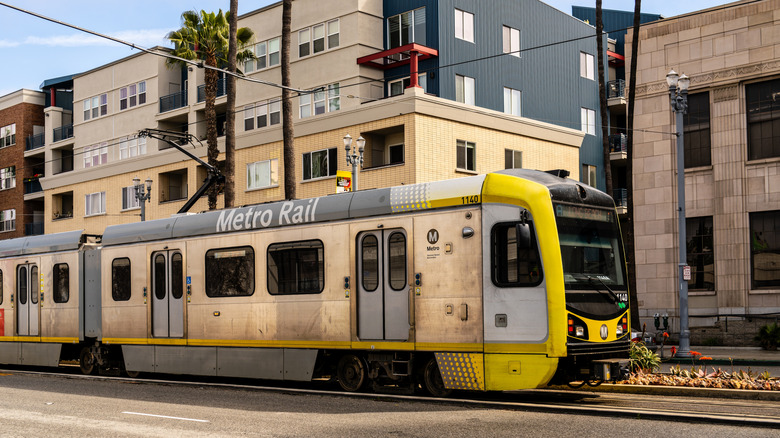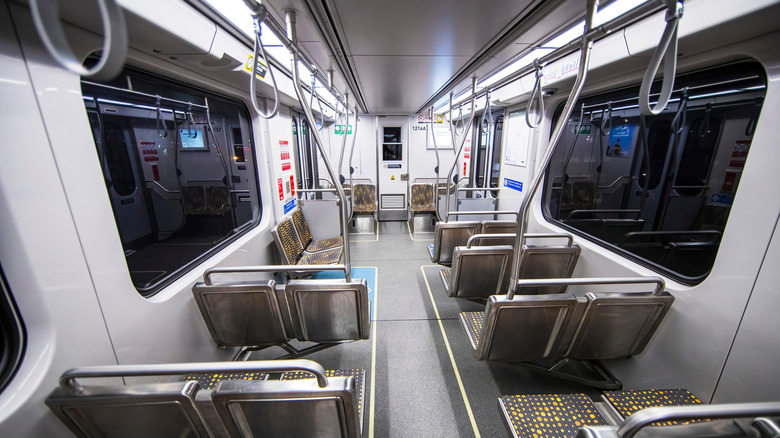This Vibrant California City Is Home To The Longest Light Rail Line In The World
"Wait a minute — Los Angeles has a subway?" Lots of people might ask this question, from tourists to longtime L.A. residents, and you can't blame them for not knowing. After all, the City of Angels is famous for its wide streets and highways, its flashy cars, and gridlock traffic. Mass transit isn't nearly as glamorous as low-riders and convertibles, and old-fashioned train cars don't match our fantasy of beaches, upscale clubs, and Hollywood stars. To be fair, only a fraction of L.A.'s train system is a "subway"; the B and D lines operate underground and are considered "heavy rail" and together cover about 20 miles of track. Most trains in L.A. are light rail, which use smaller cars and run in broad daylight.
Still, even lifelong Angelenos may be shocked to learn that their city has the longest light rail system in the world. The A Line extends 48.5 miles, from the world-famous Long Beach to the northern suburb of Azusa. In terms of distance, the A Line beats any single route in Portland, Chicago, or New York, all cities famous for their light rail transit (LRT). The A Line wows even international cities like Berlin, Vienna, and Singapore, which not only have well-established LRT but also acclaimed public transit in general. Between its robust LRT and a hyperactive rideshare community, Los Angeles is one of those rare American cities to visit where you can go car-free.
Los Angeles actually has a strong transit heritage. The "Red Car" was much beloved in the 1920s, when it held the record for the largest electric tram network in the world. Sadly, it was fully dismantled by 1961. There's also Angels Flight, an iconic, century-old funicular that's known as the "world's shortest railway."
The pros and cons of L.A.s light rail system
There's no question that the A Line is a vital artery for L.A. commuters, who can cross the entire valley without so much as turning an ignition switch. This ease of use is just one reason the city's mass transit sees more than 1 million boardings every day. Starting at only $1.75 per ride, the A Line is a great option for travelers who want to move from Long Beach to Downtown and back without spending too many dollars. The light rail is smooth and quiet, and you can theoretically mess around on your phone (or take a nap) as the train whisks you down the track. Meanwhile, Los Angeles is in the process of expanding this route, so the longest LTA line in the world will soon cover even more ground.
What's not to love? Well, it isn't exactly fast. The A Line stops at 44 stations, and if you board in Long Beach, it'll take you two hours to reach Citrus College Station, its current endpoint. If you didn't hit traffic, you could drive between these two points in about 40 minutes.
The A Line also passes through some economically challenged neighborhoods, such as Compton, Watts, and Skid Row. While homelessness and gang activity are on the decline, Los Angeles County has more than 72,000 unhoused people, and these underserved districts aren't as dazzling as, say, Venice Beach. First-timers to Southern California don't always realize how sprawling this city of 3.8 million people is, and staying in an inconvenient part of town is one of the top mistakes to avoid when visiting Los Angeles. The A Line may get you there eventually, but no one will fault you for calling a Lyft.

